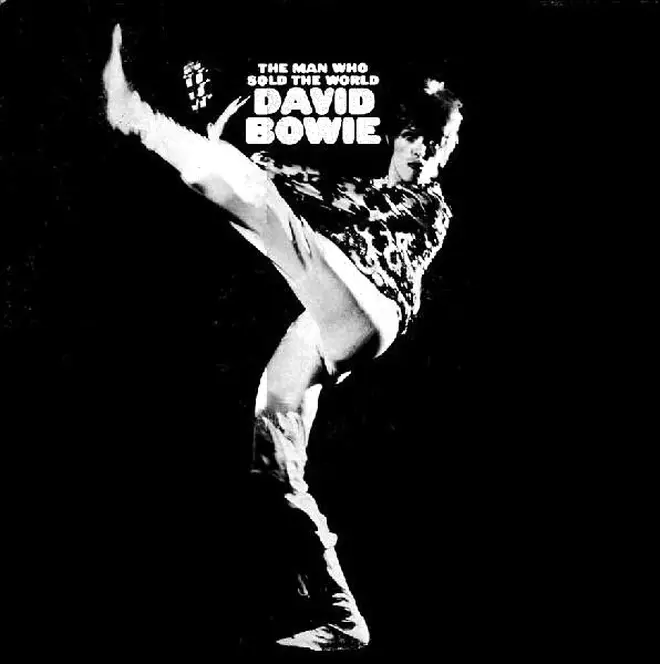Classic Rock album covers that were changed, banned or censored
15 November 2024, 15:00 | Updated: 13 February 2025, 17:45

Rock music is no stranger to controversy: here are some examples of album covers that were changed or banned for legal or moral reasons.
Content Warning: this article contains subjects and images some people may find offensive.
-
The Beatles - Yesterday And Today (release date 15th June 1966)
The Beatles - Yesterday And Today "butcher" cover: some sort of art statement, it says here. Picture: Alamy The Fab Four collaborated with photographer Robert Whitaker on a series of weird "pop art" photographs, but one of the series was plucked out of the set by the band's US label Capitol and plonked on a new album without any context our explanation. Retailers recoiled from the grotesque image of "dead babies" and raw meat, so the "Butcher cover" was hastily withdrawn with a more boring design.
The Beatles - Yesterday And Today: the more sedate alternative cover. Even Paul looks bored. Picture: Alamy -
The Velvet Underground & Nico (released March 1967)
The classic debut album from the pioneering New York band featured a shot of the group performing on stage at one of Andy Warhol's Exploding Plastic Inevitable events. Unfortnately, the photo caught an image of one Eric Emerson projected on the wall behind them, leading the Warhol-affiliated actor to try and sue MGM Records. The label retaliated by covering up the picture of the star of Heat and Chelsea Girls with a big black sticker.
Eric Emerson makes an unexpected appearance on the back cover of The Velvet Underground and Nico. Picture: Alamy -
The Jimi Hendrix Experience - Electric Ladyland (release date 16th October 1968)
For his third album (and the last studio outing to be issued in his lifetime), Hendrix asked for a tasteful photo of the band - including bassist Noel Redding and drummer Mitch Mitchell - as taken by Linda McCartney. However, for reasons unknown, Track Records in the UK decided to create a sleeve with a photo by David Montgomery featuring nineteen naked women lounging around, discreetly covered by previous Hendrix record covers.
Too rude for Jimi? The "nude women" version of Electric Ladyland, released in the UK. Picture: Alamy Some stores refused to stock the album, ad Jimi himself thought that the photo was a bit crass. In the US, the album appeared with a photo of the guitarist, onstage at the Saville Theatre in London.
The US edition of Electric Ladyland. Picture: Alamy -
John Lennon and Yoko Ono - Two Virgins (release date 29th November 1968)
John and Yoko's first volume of avant garde noise featured a full frontal nude photo of the couple on the cover to mark their new life together, which - understandably - record label EMI was not keen to, er, handle. The album was farmed out to the indie Track Records, and later sold in a "brown paper" cover, like common or garden pornography.
The "brown paper" edition of John Lennon and Yoko Ono's Two Virgins album - Paul was not a fan. Picture: Alamy -
The Rolling Stones - Beggars Banquet (release date 6th December 1968)
The original idea for the cover photo for the Stones' 1968 album was to feature the "banquet" of the title - the band dressed in elaborate costumes, lounging at a medieval feast. However, Mick Jagger went off the idea and instead came up with the notion that the sleeve should bear a toilet wall, graffitied with the band name, album title and the details of all the songs.
The Rolling Stones - Beggars Banquet: the band's choice. Picture: Press Reputedly shot in the toilet of a Porsche dealership in Los Angeles, the band's label Decca were horrified at the image and refused to release the LP in the summer of 1968 as intended.
"It was simply an idea that had not been done before," said Mick. "We chose to put the writing on a lavatory wall because that’s where you see most writings on walls. There’s really nothing obscene there except in people’s own minds."
A deadlock ensued between the record company and the musicians, and it wasn't until December that the album finally appeared, with the sleeve now bearing a fake dinner invitation. It wasn't until the 1980s and the CD era that the original bog-based art was used.
The Rolling Stones - Beggars Banquet: the label's choice. Picture: Alamy -
Pink Floyd - Ummagumma (release date 7th November 1969)
The appearance of a copy of the soundtrack to the 1958 movie Gigi in the foreground of Floyd's memorable 1969 album cover caused a wobbly moment from the American record label, who insisted it be painted out on some copies to avoid any copyright infringement.
Pink Floyd's Ummagumma album cover, complete with unauthorised Gigi inclusion. Picture: Alamy -
David Bowie - The Man Who Sold The World (release date 4th November 1970)
David Bowie - The Man Who Sold The World in 1970: man wearing dress. Picture: Press A lot of people were taken aback by the sight of Bowie reclining on a chaise lounge in a "man's dress", especially the American label who rejected the shocking (for 1970) image. They used a cartoon instead. Even then, the design was compromised as the speech bubble was meant to feature the man saying "Roll up your sleeves and show us your arms", but the drug reference worried the label and they left it blank.
David Bowie - The Man Who Sold The World in the US: cartoon man. Picture: Alamy When Bowie had become a superstar in 1972, the album was reissued with a black-and-white glam-era shot of the musician.
David Bowie - The Man Who Sold The World in 1971: man wearing trousers. Picture: Press -
Alice Cooper - Love It To Death (release date 9th March 1971)
The band's third album featured the frontman doing the classic "finger through the flies looks a bit like a willy" gag, which incurred the wrath of some record stores, meaning the sleeve was changed for later pressings, with the photo re-cropped to obscure the gag.
Alice Coopers' juvenile cover for Love It To Death. Picture: Press -
Led Zeppelin - Houses Of The Holy (release date 28th March 1973)
The mystical sleeve photo on the band's fifth album was shot by Hipgnosis man Aubrey Powell at the Giant's Causeway in Northern Ireland, using sibilings Stefan and Samantha Gates as models. Some territories were nervous about the naked buttocks on display, so action was taken to downplay the nudity.
A Japanese CD of Led Zeppelin's Houses Of The Holy. Picture: Alamy -
David Bowie - Diamond Dogs (release date 24th May 1974)
Bowie's 1974 album certainly wasn't "the dog's b*llocks" as the half-man, half-canine hybrid of Belgian artist Guy Peellaert's cover painting had its testicles airbrushed out for sensitive British audiences. For later reissues, for example the 1990 "Sound + Vision" repressing, the offending gonads are all present and correct.
The opened out cover of Diamond Dogs with art by Guy Peellaert, minus canine testicles. Picture: Alamy -
Roxy Music - Country Life (release date 15th November 1974)
Constanze Karoli and Eveline Grunwald on the cover of Roxy Music's 1974 album Country Life. Picture: Alamy Vogue and Vanity Fair photographer Eric Boman took this shot of Constanze Karoli and Eveline Grunwald as part of Bryan Ferry's commitment to Roxy Music album sleeves having the appearance of high fashion magazine covers. Some countries, including the good old USA, took exception to the scantily clad models and replaced the image, first with an opaque green "wrapper" to obscure the sleeve and then with the neutral photo used on the back cover.
The US edition of Roxy Music's Country Life. Models not pictured. Picture: Alamy -
Lynyrd Skynyrd – Street Survivors (release date 17th October 1977)
Three days after this album was released, Skynyrd were involved in a terrible plane crash that killed six people, including three members of the band. The sleeve art was in retrospect horribly prophetic and was quickly replaced with a version that removed the flames.
Lynyrd Skynyrd – Street Survivors album cover, with guitarist Steve Gaines in the centre: he died in the 1977 plane crash that killed five other people. Picture: Press -
The Rolling Stones - Some Girls (release date 9th June 1978)
The original edition of Some Girls by The Rolling Stones used celebrity faces without permission. Oops. Picture: Alamy The original pressing of the Stones' disco-era album had a die-cut cover from which different faces appearing on the inner sleeve could peep out. Unfortunately, said faces were shots of celebrities like Marilyn Monroe, Liza Minnelli, Raquel Welch, Farrah Fawcett and Lucille Ball and permission was not given in advance. Consequently, the sleeve was quickly reissued with "PARDON OUR APPEARANCE - COVER UNDER RECONSTRUCTION" signs blotting out the celebs...
The Rolling Stones' Some Girls... the "COVER UNDER RECONSTRUCTION" version. Picture: Press -
Whitesnake - Lovehunter (release date 21st September 1979)
Ace fantasy (and occasional Doctor Who) artist Chris Achilleos painted the sleeve for the British rock band's second album, which inevitably drew criticism. “We are playing cock-rock," admitted frontman David Coverdale. "We are bathing in innuendo." Some retailers stuck a great big sticker over the offending buttocks, while a cassette version from Singapore has a t-shirt and shorts painted over the naked woman.
Whitesnake - Love Hunter album cover. Picture: Alamy -
Bon Jovi - Slippery When Wet (release date 18th August 1986)
The original sleeve for the band's breakthrough album was to have featured a woman in a wet t-shirt, but in an age of concern over inappropriate content in rock music, the record label panicked and a more inoffensive design was employed instead.
The original Slippery When Wet album cover t-shirt, up for auction in 2022. Picture: Gabriele Holtermann/Sipa USA/Alamy -
Tin Machine - Tin Machine II (releaase date 2nd September 1991)
The second and final album from David Bowie's rock outfit featured an image of Greek Kouroi statues, which date back to ancient times. However, the full frontal nudity was too much for America, who airbrushed the winkies out - ouch.
Tin Machine II album cover from 1991. This was all a bit much for America. Picture: Press
































